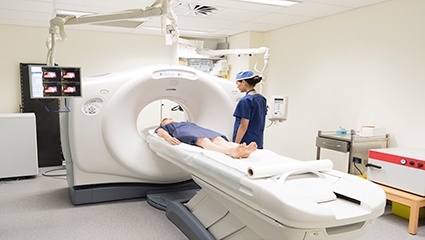 Radiologists are understandably nervous about the Medicare rule requiring the use of Appropriate Use Criteria and Clinical Decision Support (AUC/CDS) systems. Beginning January 1, 2018, radiologists will be penalized through denial of Medicare payment when referring physicians do not order certain advanced imaging examinations using an approved Clinical Decision Support (CDS) system.
Radiologists are understandably nervous about the Medicare rule requiring the use of Appropriate Use Criteria and Clinical Decision Support (AUC/CDS) systems. Beginning January 1, 2018, radiologists will be penalized through denial of Medicare payment when referring physicians do not order certain advanced imaging examinations using an approved Clinical Decision Support (CDS) system.
The Medicare regulation was enacted as part of the Protecting Access to Medicare Act (PAMA) of 2014. It mandates that ordering providers consult Appropriate Use Criteria (AUC) when ordering advanced imaging examinations such as MR, CT, PET, and other nuclear medicine exams for Medicare patients. The burden of reporting the CDS consultation is on the radiologist, whose payment will be denied in full when the ordering provider fails to use the system.
The denial of payment will apply to both the professional and technical components of the Medicare reimbursement, whether the procedure is billed separately or globally. This brings the interests of the radiology group and the hospital into alignment to jointly implement and develop a system with which ordering physicians must comply. There is no financial penalty to the ordering physician who does not consult and document the use of AUC.
The rule requiring consultation with AUC will apply for outpatient services whether in the hospital or imaging center. Inpatient services covered under Medicare Part A are not subject to the regulation, nor are services ordered for an individual with an “emergency medical condition,” regardless of the location where those services are performed.
Imaging providers will have a limited amount of time, from July to December, in which to select and acquire a system, implement it, and train ordering physicians to use the system because the list of qualified Clinical Decision Support Mechanism (CDSM) systems will not become available until June 30, 2017. Denial of payment is expected to begin January 1, 2018.

A CDSM is defined as, “an interactive, electronic tool for use by clinicians that communicates AUC information to the user and assists them in making the most appropriate treatment decision for a patient’s specific clinical condition.” The CDSM tool can be either an integral part of an existing electronic health records system or a stand-alone system, as long as it is certified by the Centers for Medicare and Medicaid Services (CMS) as a qualified system.
The rule specifies that Qualified Provider-Led Entities (QPLE) must develop the clinical guidelines that make up the appropriate use criteria, and CMS initially has approved the following 11 QPLEs :
- American College of Cardiology Foundation
- American College of Radiology *
- Brigham and Women's Physicians Organization *
- CDI Quality Institute
- Intermountain Healthcare
- Massachusetts General Hospital, Department of Radiology *
- National Comprehensive Cancer Network
- Society for Nuclear Medicine and Molecular Imaging
- University of California Medical Campuses
- University of Washington Physicians
- Weill Cornell Medicine Physicians Organization
Three of these (indicated with an *) have been developing radiology-specific clinical ordering criteria for many years. Massachusetts General Hospital, for example, has been using CDS since 2004. The criteria developed by these PLEs will be incorporated into the CDSMs ultimately installed in practice settings. Other QPLEs may be added at the same time as the initial list of qualified CDSMs is published by CMS, no later than June 30, 2017.
What Radiology Practices Can Do Now to Prepare for CDS

The process used for reporting the use of a CDSM through claims submission is not yet known. The details are under development at CMS and will be published in the 2018 Medicare Physician Fee Schedule (MPFS). Once the methodology is defined, be sure to communicate with your billing department whether they are in-house or an outside Revenue Cycle Manager (RCM). They will need to know how your system will indicate compliance with the requirements in order to properly satisfy Medicare and assure that payments are not denied. Cooperation among all parties in the development of the system, protocols and procedures will be essential, and it’s not too early to begin.
Radiologists in hospitals should be involved with a formal planning process along with the hospital administration for implementation of a system, if one does not already exist. The hospital will have to be an integral player to mandate the use of the CDSM by the ordering physicians. Often the CDSM is tied to the electronic order entry system the hospital may already have in place. Ideally, the entire system is integrated with the electronic health record (EHR) system that will assist the radiology group in its reporting of the consultation.
In the imaging center, research should be underway into the CDS systems available. The first place to look is the vendor that provides the center’s Radiology Information System (RIS) and its Picture Archiving and Communication System (PACS). The vendor should be using AUC that are under development by one of the 11 PLEs listed above, and the system should be well along in the process of receiving CMS approval as a qualified CDSM.
Regardless of the site of service, the ordering physician community will have to be educated on the need to comply with the ordering consultation requirements, and receive training on the system(s) that are in use. Educating the referring community is a task all physicians in the group will have to embrace, because the cost of denied payments will add up quickly. It might be illustrative for the physicians to consider how much Medicare revenue the practice receives from MRI, CT, PET, and other nuclear medicine exams each year to understand what is at stake. The group will have to discuss how it will handle exams that are ordered without the requisite AUC consultation – how to provide feedback to the ordering physician, whether or not to perform the exam, and under which circumstances to take certain actions. The earlier the system can be implemented with feedback to the ordering community, the better the compliance level will be by January 1st when denial of payment for noncompliance begins.

Upcoming key dates include June 30, 2017 for the release of the list of qualified CDSMs, July 2017 when the proposed Medicare Physician Fee Schedule is published, and November 2017 when the final MPFS rule is published. Healthcare Administrative Partners will continue to provide updated information on this new Medicare requirement as it becomes available. Subscribe to this blog for our coverage of the latest developments.
Related Articles:
One Simple Way a Radiology Group Added Value to Their Hospital Relationship
Proper Use of Medicare ABN's for Radiology Practices
The Need for Standardized Radiology Documentation to Maximize Medicare Reimbursements






